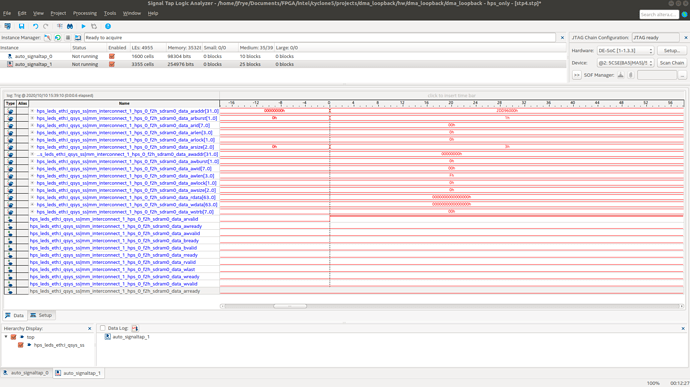So I am actually running to issues on this same application now. For whatever reason, my arready is never asserting when I am using the DMA (30. DMA Controller Core)
It would appear as though the F2SDRAM is never ready to send me data or I am requesting data from a bad address. I am programming the DMA with the address I get from Linux in my driver using
typedef struct tx_dma_buf {
struct cdev cdev;
volatile phys_addr_t phys_addr_tx;
volatile unsigned int *virt_addr_tx;
volatile unsigned int *dma_regs;
dev_t dev_node;
struct class *class;
} tx_dma_buf_t;
tx_dma_buf_t *tx_dma_buf;
tx_dma_buf->virt_addr_tx = (unsigned int *)kmalloc(BUFFER_SIZE, GFP_KERNEL);
tx_dma_buf->phys_addr_tx = virt_to_phys( (volatile void *)tx_dma_buf->virt_addr_tx);
